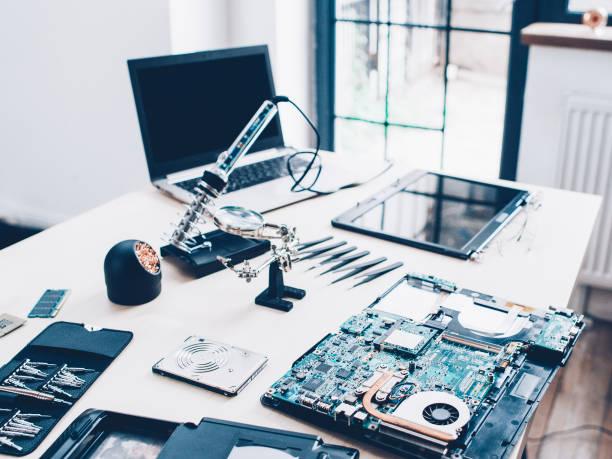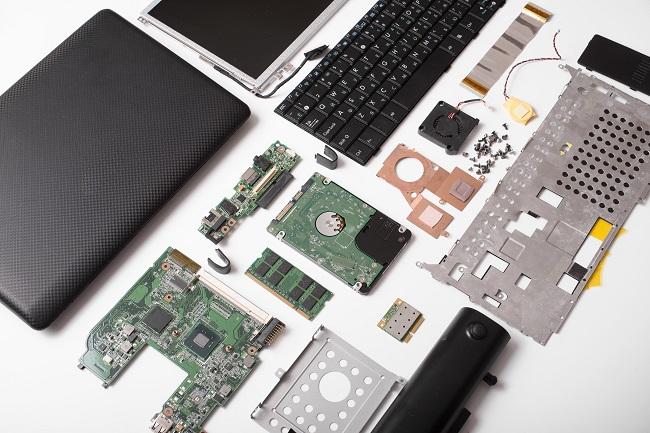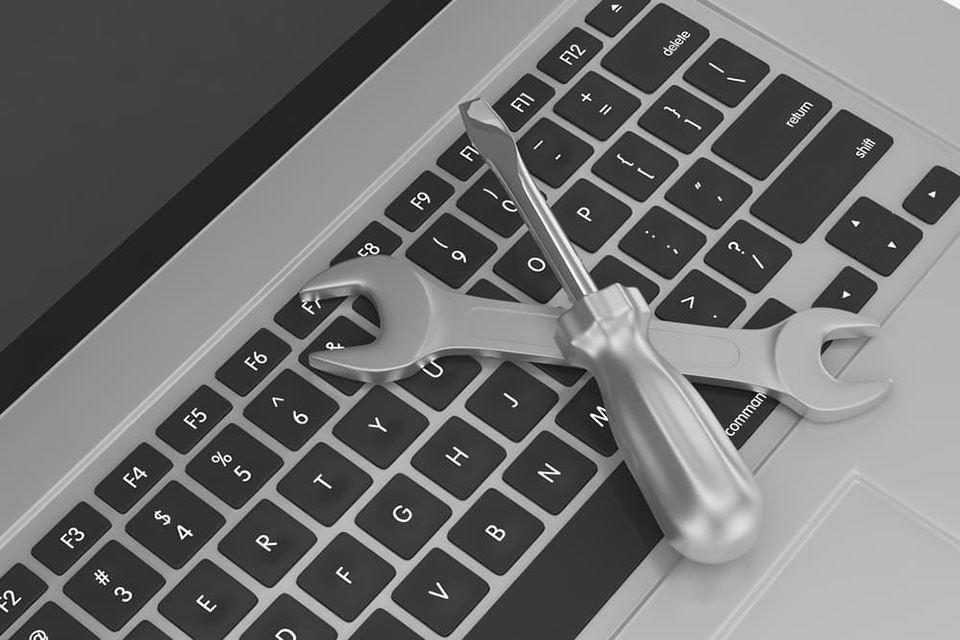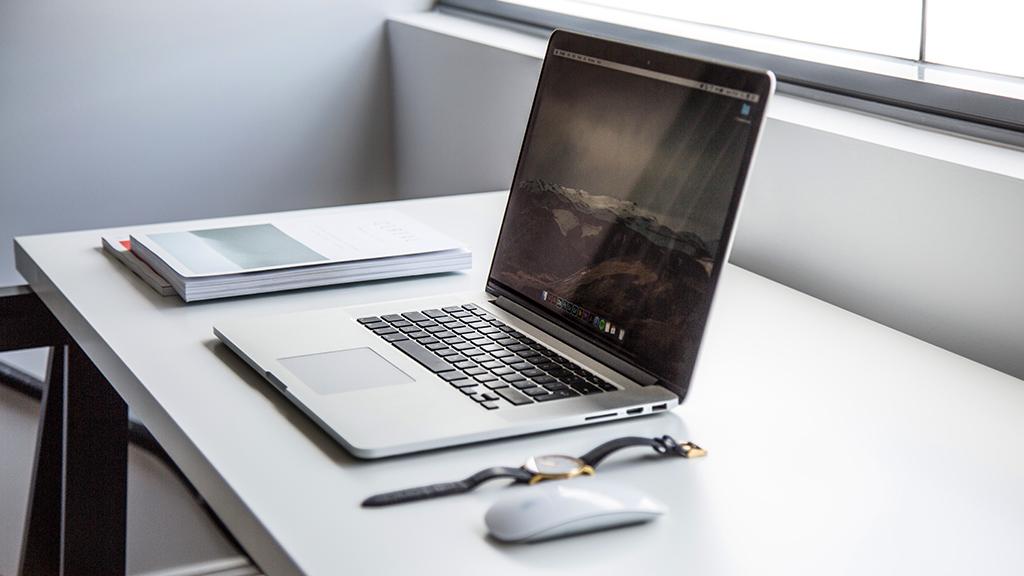The Ultimate Guide to Laptop Replacement Parts: Everything You Need to Know Leave a comment
Introduction
In today’s fast-paced digital world, laptops have become an indispensable tool for work, entertainment, and communication. From professionals relying on laptops for enhanced productivity to students utilizing them for research, assignments, and online learning, the reliance on these devices is undeniable. However, just like any electronic device, laptops are susceptible to wear and tear, hardware failures, or accidental damage that may require the replacement of certain parts. Whether you consider yourself a tech enthusiast or a casual user, having a solid understanding of laptop replacement parts can empower you to take control of repairs, save valuable time, cut costs, and minimize frustration. In this comprehensive guide, we will delve into the realm of laptop replacement parts, equipping you with the knowledge and insights necessary for successful repairs.. The Ultimate Guide to Laptop Replacement Parts: Everything You Need to Know.
Why Understanding Laptop Replacement Parts Matters:
Laptops have evolved to be powerful, portable devices that cater to our ever-expanding digital needs. They consist of intricate hardware components and delicate circuitry that work in harmony to deliver a seamless user experience. However, over time, certain parts may experience wear and tear, malfunction, or sustain damage due to accidents or mishandling. When faced with such issues, understanding The Ultimate Guide to Laptop Replacement Parts: Everything You Need to Know becomes crucial for several reasons:
- Cost Savings: Instead of resorting to purchasing a brand new laptop when faced with a malfunctioning component, identifying and replacing the specific Laptop Replacement part can be a more cost-effective solution. By understanding the role of different laptop parts, you can make informed decisions about whether a replacement is necessary and choose more economical options.
- Extended Device Lifespan: Replacement of damaged or outdated laptop parts can breathe new life into your device, allowing you to enjoy its functionality for an extended period. By addressing issues promptly and replacing necessary parts, you can postpone the need for a complete laptop upgrade, ultimately saving you money.
- Personalized Upgrades: Understanding the Ultimate Guide to Laptop Replacement Parts: Everything You Need to Know empowers you to personalize and optimize your device according to your specific needs. By identifying components that can be upgraded, such as RAM, storage, or even the display, you can enhance your laptop’s performance without the need for a complete replacement. This flexibility allows you to tailor your device to suit your requirements and stay up-to-date with evolving technologies.
- Empowerment and Independence: Understanding the Ultimate Guide to Laptop Replacement Parts: Everything You Need to Know grants you the confidence and independence to handle basic repairs yourself. Rather than relying on costly professional services for every minor issue, you can troubleshoot and fix common problems, saving both time and money. This self-sufficiency also gives you greater control over the repair process and reduces downtime associated with external repairs.
- Timely Repairs: With an understanding of the Ultimate Guide to Laptop Replacement Parts: Everything You Need to Know, you can accurately identify the root cause of an issue and promptly procure the necessary replacement parts. This knowledge enables you to avoid delays caused by misdiagnosis or incorrect part orders, allowing you to resolve the problem swiftly and efficiently.
In the following sections, we will explore various aspects related to understanding the Ultimate Guide to Laptop Replacement Parts: Everything You Need to Know, providing you with valuable insights and practical tips. We will cover common laptop issues and their corresponding replacement parts, essential tools required for repairs, reliable sources to procure high-quality replacement parts, tips for successful DIY repairs and strategies for optimizing your laptop’s performance through upgrades. By the end of this comprehensive guide, you will be well-equipped to tackle laptop repairs, make informed decisions about replacement parts, and maintain the functionality and longevity of your device.
Let’s embark on this journey to demystify laptop replacement parts and empower you to reclaim control over your device’s functionality, while also saving time, cutting costs, and minimizing frustration.
Understanding Laptop Replacement Parts
Laptops are intricate machines composed of various hardware components that work together to provide a seamless computing experience. To effectively troubleshoot and repair laptop issues, it is essential to have a solid understanding of the different replacement parts involved. In this section, we will explore the key laptop replacement parts and their functions.

- Motherboard: The motherboard, also known as the mainboard or system board, is the central component of a laptop. It acts as a hub, connecting and facilitating communication between all other components, including the processor, memory, storage, and peripheral devices. The motherboard also houses essential circuits, such as the BIOS (Basic Input/Output System) and various ports for connecting external devices.
- CPU (Central Processing Unit): The CPU is often referred to as the brain of the laptop. It performs all the essential calculations and processes that drive the system’s performance. The CPU’s speed, number of cores, and architecture significantly impact the laptop’s overall speed and multitasking capabilities. In most cases, the CPU is soldered directly onto the motherboard and cannot be easily replaced.
- RAM (Random Access Memory): RAM is the temporary storage that allows the laptop to access and process data quickly. It stores data that the CPU needs to access frequently, providing a temporary workspace for active applications and tasks. Upgrading RAM can enhance a laptop’s multitasking abilities and overall performance, as it allows for smoother operation with larger datasets and more resource-intensive applications.
- Storage Devices: Laptops typically use one or more storage devices for long-term data storage. The most common types of storage devices in laptops are Hard Disk Drives (HDDs) and Solid-State Drives (SSDs). HDDs use magnetic disks to store data, while SSDs rely on flash memory. SSDs offer faster data access speeds, lower power consumption, and increased durability compared to HDDs. Both HDDs and SSDs can be replaced or upgraded to increase storage capacity or improve performance.
- Display: The laptop’s display, often referred to as the screen or monitor, allows users to interact with the device visually. Common display technologies include LCD (Liquid Crystal Display), LED (Light Emitting Diode), and OLED (Organic Light Emitting Diode). If the display becomes damaged or develops issues such as dead pixels or flickering, it may require replacement.
- Keyboard and Touchpad: The keyboard and touchpad are critical input devices on a laptop. Over time, keys may become sticky, worn out, or unresponsive due to constant use. In such cases, individual keys or the entire keyboard assembly can be replaced. Similarly, if the touchpad stops working or develops sensitivity issues, it can be replaced to restore smooth navigation and cursor control.
- Battery: The laptop’s battery provides power when it is not connected to a power source. Over time, the battery’s capacity may decrease, resulting in reduced battery life and the need for more frequent charging. If the battery no longer holds a charge or fails to provide adequate power, it can be replaced to restore the laptop’s portability and untethered usage.
- Other Components: Laptops consist of numerous other components, including but not limited to speakers, audio jacks, USB ports, wireless network adapters, graphics cards, cooling fans, and various sensors. If any of these components malfunction, they can usually be replaced to restore full functionality to the laptop.
Understanding The Ultimate Guide to Laptop Replacement Parts and their functions is the first step towards effectively troubleshooting and repairing laptop issues.
Common Laptop Issues and Corresponding Replacement Parts

Laptops, like any electronic device, can experience a range of issues that require replacement parts to restore their functionality. Understanding the common problems that laptops encounter and the corresponding replacement parts is essential for successful repairs. In this section, we will explore some typical laptop issues and the specific components that may need to be replaced.
- Dim or Flickering Display: If your laptop’s display appears dim or flickers, it may indicate a faulty backlight or inverter. The backlight illuminates the screen, while the inverter controls the power supply to the backlight. In this case, replacing the backlight or inverter can restore a vibrant and flicker-free display.
- Unresponsive or Sticky Keyboard: Repeated use can cause laptop keyboards to become unresponsive or develop sticky keys. In such cases, replacing the affected keys or the entire keyboard assembly can restore smooth and accurate typing.
- Battery Not Holding Charge:
If your laptop’s battery no longer holds a charge or drains quickly, it may be time to replace it.
Swapping the old battery can restore your laptop’s portability and allow for extended usage without the need for a power outlet. - Overheating and Fan Failure: Laptops can accumulate dust and debris over time, leading to overheating issues. If your laptop frequently overheats or if the cooling fan fails, it can result in performance degradation and potential damage to internal components. Replacing the faulty cooling fan can help maintain optimal operating temperatures and prevent overheating.
- Hard Drive Failure:
When a laptop experiences frequent crashes, slow performance, or difficulty accessing files, it could indicate a failing hard drive.
replacing the hard drive, or upgrading to a more reliable (SSD) can improve performance and data accessibility. - Faulty Memory (RAM): Random system crashes, frequent freezes, and application errors may be caused by faulty RAM modules. Replacing the malfunctioning RAM modules with new ones can resolve these issues and improve overall system stability and performance.
- Broken Power Jack:
If your laptop fails to charge or loses power intermittently.
problems may lie with the power jack, which connects the laptop to the power adapter. A broken power jack requires replacement to ensure a reliable power connection. - Damaged Audio Jack: When your laptop’s audio jack stops working or produces distorted sound, it can be frustrating. Replacing the damaged audio jack can restore clear and uninterrupted audio output.
- Broken Hinges: Laptop hinges can wear out or break due to frequent opening and closing of the lid. If your laptop’s hinges are loose or completely broken, replacing them can restore the functionality and stability of the screen.
It’s important to note that laptop models may vary in terms of design and specific components. Therefore, it’s advisable to consult the laptop’s documentation or seek professional advice to ensure compatibility when purchasing replacement parts.
In the next section,
we will discuss the essential tools required for laptop repairs, empowering you to handle common issues effectively.
Where to Source Laptop Replacement Parts

When it comes to sourcing laptop replacement parts, it’s crucial to find reputable suppliers to ensure good and quality services.
In this section, we will explore various options for procuring laptop replacement parts, enabling you to make informed decisions.
whilst to obtain high-quality components for your repairs.
The Ultimate Guide to Laptop Replacement Parts: where to source for laptop replacement parts.
- Authorized Service Centers: If your laptop is still under warranty, contacting BLESSING COMPUTERS is a recommended option. We have access to genuine replacement parts specifically designed for your laptop model. This ensures compatibility and maintains the warranty coverage for your device.
- Manufacturer’s Online Store: BLESSING COMPUTERS operate online stores where you can purchase original replacement parts.
These stores offer a wide range of components tailored to specific laptop models, ensuring highest level of compatibility and reliability. - Computer Stores:
BLESSING COMPUTER stores and electronics retailers may carry laptop replacement parts, making it convenient to obtain the required components quickly. Visit or contact these stores to inquire about their inventory and availability of specific parts for your laptop model. - Laptop Repair and Service Centers:
Blessing computers laptop repair and service centers often stock a range of replacement parts for various laptop models. Our centers employ skilled technicians who can help identify the faulty component and provide the necessary replacement. We ensure compatibility and quality, offering peace of mind throughout the repair process.
visit us at BLESSING COMPUTERS to get a reputable store to source for your replacements parts.
When sourcing laptop replacement parts, prioritize quality, compatibility, and reliability.
It’s advisable to compare prices and choose Blessing computers as your reputable suppliers to ensure the best possible outcome for your repairs.
Tips for DIY Laptop Repairs
Taking on DIY laptop repairs can be a cost-effective and empowering way to address common issues. However, it’s important to approach these repairs with caution and follow best practices to ensure successful outcomes.
In this section:
we will provide you with valuable tips for The Ultimate Guide to Laptop Replacement Parts: handling DIY repairs very carefully.

- Research and Preparation:
Before attempting any repairs, thoroughly research the specific issue you’re facing and gather relevant information about your laptop model. Consult the laptop’s documentation, online forums, or reliable repair guides to familiarize yourself with the process and potential challenges. - Create a Safe Workspace: Set up a clean and well-lit workspace with ample room to work on your laptop. Use an anti-static mat or wrist strap to prevent electrostatic discharge, which can damage sensitive components. Keep small containers or organizers handy to store screws and other tiny parts to avoid misplacement.
- Use the Right Tools:
Invest in a quality set of precision screwdrivers, tweezers, and prying tools specifically designed for electronics repairs. Using improper tools can cause damage or strip screws, making repairs more challenging. Having the right tools ensures precision and helps prevent accidental damage. - Take Photos and Notes: Before disassembling your laptop, take detailed photos and make notes of the steps you’re following. This will serve as a reference when reassembling the laptop and help you avoid confusion or mistakes.
- Handle Components with Care: Laptop components are delicate, and mishandling them can lead to further damage. Avoid excessive force when removing or inserting parts and be mindful of fragile connectors. When disconnecting cables, use gentle pulling and avoid pulling on the wires themselves
- Keep Track of Screws and Connections:
As you disassemble the laptop, keep track of which screws belong to each component and their respective locations. Different screw sizes or types may be used in various areas, and mixing them up can cause problems during reassembly. Similarly, pay attention to cable connections and take note of how they are connected before disconnecting them. - Be Mindful of Adhesive and Ribbon Cables: Some laptop components may be secured with adhesive or feature delicate ribbon cables. Take extra care when removing adhesive, as excessive force can damage the component or the surrounding area. When disconnecting ribbon cables, use a gentle lifting motion on the connector latch to avoid tearing or breaking the cable.
- Test Before Fully Reassembling:
Once you have completed the repair and reassembled the laptop, perform a test before fully closing the device. Connect the necessary cables, power on the laptop, and check that the repaired component is functioning correctly. This step allows you to identify any issues and make adjustments before securing all the components. - Take Your Time and Stay Patient: Laptop repairs can be intricate and time-consuming, especially if you’re new to DIY repairs. Take your time, follow the steps carefully, and maintain patience throughout the process. Rushing or becoming frustrated can lead to mistakes or overlooking important details.
Remember, not all laptop repairs can or should be done yourself.
If you encounter complex issues, or are uncertain about your skills, it’s best to contact BLESSING COMPUTERS assistance to avoid further damage.
Extended Laptop Lifespan: Maintenance and Care Tips

To get the most out of your laptop and ensure its longevity, regular maintenance and proper care are essential. By following these tips and best practices, you can extend your laptop’s lifespan and keep it running smoothly. In this section, we will explore key main Ultimate Guide to Laptop Replacement Parts: maintenance and care tips for your laptop.
- Keep It Clean:
Dust, debris, and smudges can accumulate on your laptop’s surface, keyboard, and ports, hindering performance and potentially causing damage. Regularly clean your laptop using a soft, lint-free cloth and mild cleaning solutions suitable for electronics. Avoid using harsh chemicals or excessive moisture that may harm the components. - Use a Cooling Pad: Laptops generate heat during operation, and excessive heat can degrade performance and reduce lifespan. Invest in a cooling pad or stand with built-in fans to improve airflow and keep your laptop cool. This is especially important when using the laptop on soft surfaces or for extended periods.
- Practice Safe Power Management: Proper power management can significantly impact your laptop’s lifespan. Avoid frequently draining the battery to 0% and try to maintain a battery charge between 20% and 80%. Unplug the charger when the battery is fully charged to prevent overcharging, which can degrade battery health over time.
- Update Software and Drivers:
Regularly updating your laptop’s software, including the operating system, drivers, and security patches, is crucial for optimal performance and security. Enable automatic updates whenever possible or manually check for updates to ensure you have the latest versions installed. - Install Antivirus Software: Protect your laptop from malware and viruses by installing reputable antivirus software. Regularly scan your laptop for threats, and avoid clicking on suspicious links or downloading files from untrusted sources. This helps maintain the integrity of your data and prevents potential performance issues.
- Manage Storage Space: Adequate storage space is essential for your laptop’s performance. Regularly declutter and organize your files, deleting unnecessary ones and transferring large files to external storage devices. This helps prevent your hard drive or SSD from becoming filled to capacity, which can lead to sluggish performance.
- Handle with Care: Laptops are portable devices and are susceptible to physical damage if mishandled. Always handle your laptop with care, avoiding dropping or subjecting it to impact. Close the lid gently, and use a protective case or sleeve when transporting it to prevent scratches and dents.
- Use Surge Protectors:
Protect your laptop from power surges and voltage fluctuations by using surge protectors or uninterruptible power supplies (UPS). These devices help safeguard your laptop from sudden electrical spikes that can cause damage to internal components. - Avoid Eating and Drinking Near Your Laptop: Accidental spills can be disastrous for your laptop. To prevent liquid damage, avoid eating or drinking near your laptop. If a spill occurs, immediately power off the laptop, disconnect the power source, and seek professional assistance if needed.
- Properly Store and Transport:
When transporting your laptop, use a padded bag or case to provide cushioning and protect it from bumps and jolts.
By implementing these maintenance and care tips, you can ensure the longevity and reliable performance of your laptop. Remember, prevention is key, and regular maintenance goes a long way in preserving your investment.
conclusion:
In this Ultimate Guide to Laptop Replacement Parts: Everything You Need to Know, we have explored the essential aspects of understanding, sourcing, and utilizing laptop components for successful repairs. By delving into the realm of laptop replacement parts, you have gained valuable insights into common laptop issues, where to source high-quality components, and tips for DIY repairs. Moreover, we have discussed the importance of maintenance and care to extend your laptop’s lifespan. With this knowledge at your disposal, you have the power to take charge of laptop repairs, saving valuable time and money while minimizing frustration. Remember, with the right understanding of laptop replacement parts, you can keep your laptop running smoothly and enjoy its full potential for work, entertainment, and communication.
Always remember to shop with Blessing Computers for your reputable and trust ensured product



